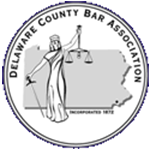In Pennsylvania,  property taxes are the primary source of revenue for county and municipal governments, and school districts. Property taxes fund our public schools and county and municipal services including fire, police and ambulance, prisons, the court system, public health programs, and human service programs.
property taxes are the primary source of revenue for county and municipal governments, and school districts. Property taxes fund our public schools and county and municipal services including fire, police and ambulance, prisons, the court system, public health programs, and human service programs.
In Pennsylvania, the county assessment office is responsible for placing a value on each parcel of land and any improvements (structures) thereon. Once a market value is established, the county assessor’s office multiplies that by the common level ratio (“CLR”), which is established for each county by the PA State Tax Equalization Board.1
HOW ARE MY PROPERTY TAXES CALCULATED?
The assessment is the basis used by the county, boroughs, townships, and school districts to levy taxes by multiplying the millage rate of the taxing authority times the assessment. The taxes are the actual dollar amount paid by an individual. To figure out your property tax:
Market Value x CLR = Assessment
Assessment x Millage = Taxes
WHAT IS MILLAGE?
The millage rate (also known as mills) is the rate at which tax revenue is generated from assessments, expressed in terms of 1/1000th of assessed value. For Example, in Chester County, the current millage is set at 4.551, equivalent to a millage rate of .004551.
Therefore, the county tax for a property with an assessed value of $100,000 and a rate of 4.551 mills would be calculated as follows: 100,000 x .004551 = $455.10.2
To calculate what the county believes your property to be worth, divide the assessed value by the CLR. In the example above, the county’s assessed value is $100,000, which, when divided by the CLR for Chester County (set at 39.5% by the Tax Equalization Board), comes up to the following:
$100,000/.395 = $253,165
HOW AND WHEN TO APPEAL YOUR ASSESSMENT
If the taxpayer does not agree with the assessment on his/her property, the property owner has the right to file a Notice of Intention of Appeal with the Board of Assessment Appeals for PA counties or Board of Revision of Taxes Office of Assessment Appeals, for the City of Philadelphia. Upon receipt of the notice, the Board of Assessment Appeals will schedule an appeal hearing and notify the taxpayer and the taxing authorities of the date and time.
The taxpayer should be prepared to provide documentation and/or exhibits in support of his/her opinion of value. If the taxpayer remains dissatisfied after the board’s action, further appeal can be taken to the Court of Common Pleas.
You should strongly consider an appeal if:
- You recently purchased a new construction home.
- Comparable properties are selling are lower than your assessed value divided by the CLR.
- The condition or amenities of your home or commercial building is not as good as that of homes that are selling for the same as your assessed value.
The Notice of Intention of Appeal can be obtained by visiting your county’s tax assessor’s website. For Philadelphia property owners, visit the Philadelphia Board of Revision of taxes website – https://www.phila.gov/departments/office-of-property-assessment/
Property owners have an opportunity to appeal their assessment every year. In Philadelphia, an appeal of real estate market value must be filed with the Board of Revision of Taxes no later than the 1st Monday of October of the year preceding the tax year for which the revision is requested, with some exceptions for new owners.
In Southeastern PA counties, annual appeals may be filed from May 1 through August 1 of each year.
The process is relatively simple. At a brief hearing the property owner can present such recent sales documentation for sales of similar homes in their area and other market data and information that may have an impact on the value of the property (such as the property’s condition, ingress and egress, restrictions to title, etc.). Presenting an appraisal by a licensed appraiser regarding the property’s value is likely to be persuasive to the board.
Based upon a short hearing and the documentation provided by the property owner, the board will determine a fair market value for the property. The board then applies the appropriate CLR to the fair market value to arrive at the new assessed value.
Note that by appealing, the property is open to the re-valuation process in which the property assessment may be lowered, raised, or remain the same. In other words, before appealing, be sure that the information you provide to the board will not result in a higher assessment.
Contact Omnis Law Group today to speak with an experienced real estate attorney, like Val DiGiorgio, to find out if appealing your assessment could be advantageous. Val can be reached at VFD@Omnislawgroup.com, you can contact the firm online, or call 484-81-OMNIS to set up an initial consultation.
_____________________________
1 The CLR is created by the Pa. State Tax Equalization Board (STEB) on an annual basis for each county. The CLR is an average of assessments to sale prices (based upon valid sales activity for the prior calendar year). The CLR is applied only when the ratio varies by more than 15% from the 100% predetermined ratio. For more information on the Common Level Ratio go to https://dced.pa.gov/local-government/boards-committees/tax-equalization-division/
2 Your township or borough AND your school district will also set their own millages and apply them to the assessed value which, when combined with the county, will represent your total property tax bill.









